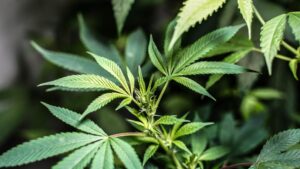And like a holiday blockbuster – people have something new to worry about – but marijuana could come to the rescue.
Blockbuster disaster movies always have something destroying major cities. Now scientist are citing the very real evidence we could have space junk crashing and having a big impact on the planet. Kessler syndrome, proposed by NASA scientists Donald J. Kessler and Burton G. Cour-Palais in 1978, describes a potential cascade of collisions in low Earth orbit (LEO) that could render space activities increasingly difficult This scenario occurs when the density of objects in orbit becomes so high that collisions between them generate debris, further increasing the likelihood of subsequent collisions. It seems with everything sent to space, civilization could be at a tipping point. But cannabis can keep you from freaking out about Kessler Syndrome.
RELATED: Science Says Medical Marijuana Improves Quality Of Life

While disaster movies are more dramatic, the idea of space junk destroying Paris, New York or Los Angeles is low. BUT…the real tragedy it could force human to go analog again as it poses a significant threat to space-based activities and technologies. Critically, it could disrupt telecommunications, internet connectivity, GPS navigation, and weather forecasting. And the effects could last for generations, making space exploration and satellite usage dangerous or impractical.
On top of all the other anxiety, this could tip the scale, but research data shows cannabis, particularly products high in CBD (cannabidiol), may offer relief from anxiety symptoms without the risks associated with THC-dominant products.
While both THC and CBD can affect anxiety levels, their impacts differ:
- THC (Tetrahydrocannabinol): This psychoactive compound has a biphasic effect on anxiety. Low doses may decrease anxiety, while higher doses can potentially increase issues.
- CBD (Cannabidiol): Studies indicate that CBD appears to decrease anxiety at all tested doses, without the psychoactive effects associated with THC.
RELATED: Holiday Hangover? Here’s How To Stop It Before It Strikes
When considering cannabis for anxiety management, especially in the context of concerns about the Kessler syndrome, it’s important to note:
- Individual Responses: Reactions to cannabis can vary widely among individuals, influenced by factors such as dosage, strain, and personal physiology.
- Consultation: It’s crucial to consult with a healthcare provider or a state-certified cannabis clinician before using cannabis for anxiety treatment.
- Complementary Approach: Cannabis should not replace traditional anxiety treatments like talk therapy but rather be considered as a potential complementary approach.
- Dosage and Ratio: The ratio of CBD to THC in cannabis products can significantly impact their effects on anxiety. CBD-dominant products may be more suitable for anxiety relief.
- Long-term Effects: While cannabis may offer short-term benefits for anxiety symptoms, long-term effects and potential risks should be considered.
if you ever thought you were an actor in the movie, just look at the news – you can’t make this stuff up.




















